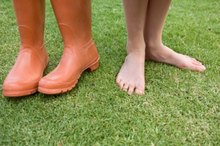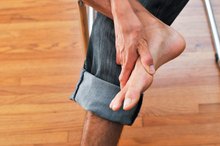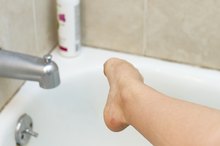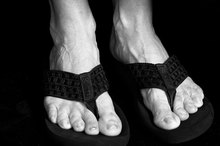How Does Corn Removal Work?
Corns
Corns are the accumulation of dead skin cells that form thick, hard areas on the foot. Usually, they take the shape of a cone, with the tip of the cone, or core, pressing on a nerve below the skin, causing pain.
If you are experiencing serious medical symptoms, seek emergency treatment immediately.
Corns are most commonly found on the toes. Corns that are found between toes are usually called "soft" corns, while those found on the tops, fronts and back of toes, or elsewhere on the foot, are called "hard" corns. Corns are usually caused by friction, which is in turn caused by ill-fitting shoes.
- Corns are the accumulation of dead skin cells that form thick, hard areas on the foot.
- Usually, they take the shape of a cone, with the tip of the cone, or core, pressing on a nerve below the skin, causing pain.
Corn Removal
How to Remove Foot Corns Naturally
Learn More
Corns are caused by friction and pressure, so the first step in removing a corn is to reduce that pressure. This can be done by getting new shoes or placing a soft moleskin pad over the corn itself.
Other methods for removing a corn include soaking it in hot water with Epsom salts, using corn "plasters," rubbing the dead skin off with a pumice stone and applying lotion to the corn to soften up the dead skin (lanolin-based is best). If a corn is particularly large, it might be prudent to visit a podiatrist, who can shave off the corn with a scalpel blade. Again, it is important to remember that these solutions are all temporary, and the corn will return without treating the pressure problem or area of the foot. See Section 3 for tips on preventing future corns.
Over-the-counter ointments and corn removal pads that contain acids (usually salicylic acid) usually end up damaging the healthy skin around the corn and are not recommended by most doctors for treating average corns. In addition, if you have an infected corn (it is draining fluid or pus), you should see a doctor immediately for treatment.
- Corns are caused by friction and pressure, so the first step in removing a corn is to reduce that pressure.
- Over-the-counter ointments and corn removal pads that contain acids (usually salicylic acid) usually end up damaging the healthy skin around the corn and are not recommended by most doctors for treating average corns.
Prevention of Corns
To prevent corns, the first thing you should do is make sure your shoes fit properly. They should not be too big or too small but rather should fit correctly, with ample room in the toe area. If you are on your feet throughout the day, consider a shock-absorbing insert that will help relieve the pressure on your feet. In addition, avoid wearing tight socks or nylons, which do not allow for much air circulation to the foot. Finally, if you have chronic corn problems caused by bone issues (crooked or broken toes), you can consider seeing a doctor to have surgery done to correct the toe's position.
- To prevent corns, the first thing you should do is make sure your shoes fit properly.
- Finally, if you have chronic corn problems caused by bone issues (crooked or broken toes), you can consider seeing a doctor to have surgery done to correct the toe's position.
Related Articles
References
- DeLauro T and DeLauro M (2012) Chapter 98: Corns and Calluses. Fitzpatrick's Dermatology in General Medicine (8th Edition). New York, New York: McGraw-Hill Education. ISBN-13: 978-0071669047.
- American Academy of Dermatology Association. How to treat corns and calluses. 2019.
- Reddy P, Anusha T, Haritha N, Nagendra A, Bhavani D, Gandhimathi R. Case report on non-surgical treatment for foot corn. International Journal of Dermatopathology and Surgery. 2018;4(1).
- American Academy of Dermatology Association. How to Treat Corns and Calluses. 2019.
- DeLauro T and DeLauro M (2012) Chapter 98: Corns and Calluses. Fitzpatrick's Dermatology in General Medicine (8th Edition). New York, New York: McGraw-Hill Education. ISBN-13: 978-0071669047.








